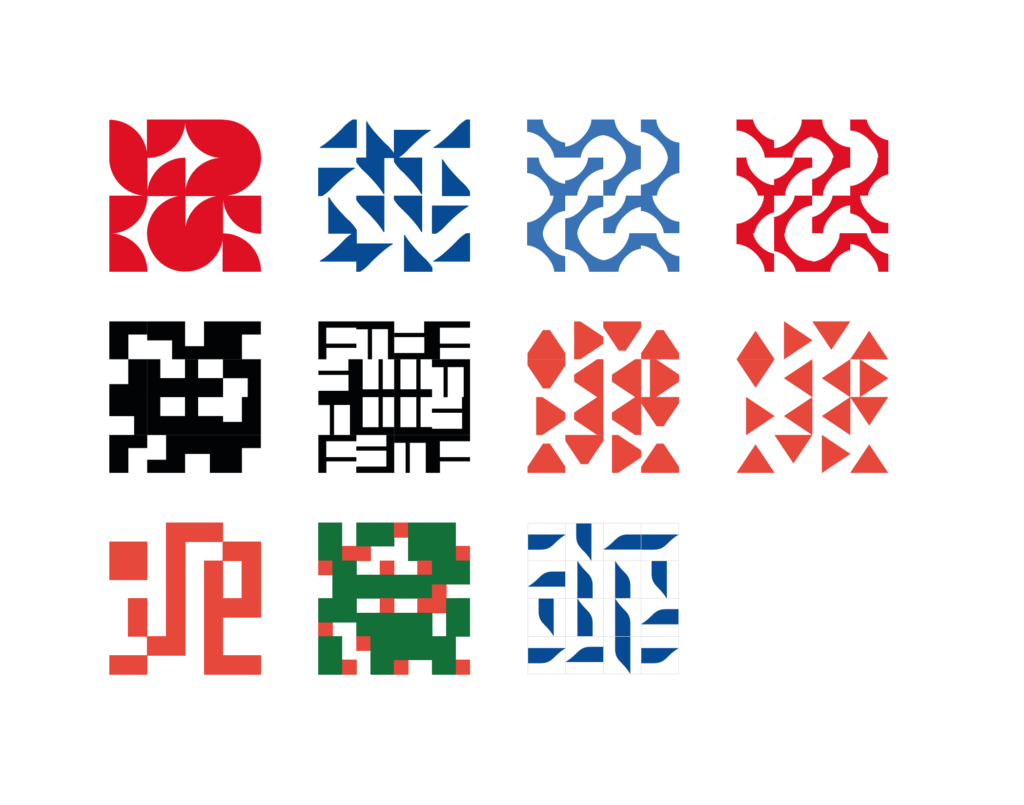Background
The client is an Art PHD student at the University of Reading who set out to create a ‘document’ that visually supported and demonstrated his findings on the artist Sol Hewitt. The aim was to create a document that served as an exhibition that demonstrated and mapped out methods that artists could use to create works (like framework/a guide). The document would feature different sections that demonstrated these methods with business logos and material, created by the client. The art works ranged between black and white and colour, as well as larger and smaller dimensions (so quite dynamic).
Brief
The brief was to design a document (precise dimensions and materials unspecified). This included organising and compiling the client’s own works alongside written work as well as visual examples of certain methods being put to use. The document was set to be printed on as opposed to digital outcomes and was meant to be adaptable as reading material as well as exhibitory.
Initially, the client and I were working and planning for an A4 format (this later changed to A3). The document was to be printed in colour and able to be put into a ring binder similar to traditional business design specs. The paper stock to be used was traditional business paper also often used in these design specs. Overall, the document needed to look ‘clean’ and minimal in design as it was important for the content to be followed as well as viewed.
Research
Due to the nature of this particular project, there wasn’t much research to be done aside from getting to know more about Sol Hewitt. Together, we were creating something new and original, so it wasn’t necessary to look for specific inspiration. I did however have a look through the department’s collection, where we have and keep old business specimens. This was useful as it gave me insight into what we were going for in an aesthetic sense.
Communication
Throughout this project, the client and I had regular meetings whenever we were both available for a couple of hours to discuss specific work that couldn’t be done over email. Throughout, the client and I communicated over email equally to meeting in real life. I would personally say that it was more effective to meet up in real life as it allowed for easier communication and direct alteration. I was the only Typography student on the project so that also allowed for a simpler and more straightforward stream of communication.
Schedule
The original deadline was not met as we were still working together past that date. This was somewhat predicted by the client as we got to this date. This was due to the fact that from the start of the project, the client made it clear that the document was very much a work in progress. A work in progress can’t really have a timestamp on it due to the fact that it is ever changing and thus, the deadline probably served merely as an estimated time of finishing.
Design
Similarly to the research process, the designing process wasn’t a method I was necessarily used to. The way we worked together went as follows; the client would prepare the work in the way that he wanted it to look, then sent it to me to ‘design’ it in a more professional manner (on InDesign by use of a grid system and correct margins etc.), finally it was sent back to the client for approval. This process of working applied to all sections of the proposed document. This method of working collaboratively was different from the work I was used to within the department where I was instead encouraged to come up with design solutions myself. Getting instructed to do specific things (with not as much personal input) although quite relaxing and straightforward wasn’t the most exciting experience in terms of designing. This has made it clear to me that I much prefer being in control and having more of an input into certain projects. However, due to the nature of this scheme and the job that I signed up for, this could be said to be a process that simply ‘comes with the job’ of being a designing within certain industries or practices.
An example of the working process can be seen in figure 1, where the pdf’s demonstrate original examples and work that was provided to me to design. The highlighted pdf showcases a finished design where all of the original prints were compressed to one A3 (the final decided format). This was the process for all sections of the document.

Feedback
Feedback received from the client throughout the project was constantly encouraging and uplifting. These were always positive exchanges that highlighted the fact that collaboration at this level can be effective as well as pleasant. Some minor feedback received usually was surrounding paper stock and which were more effective, similarly to dimensions of certain art works in relation to each other.
Conclusion
Moving forward, I hope that the work I helped the client produce was up to standard and that they can be proud of the way in which their art work looks when organised and designed at larger scale than the comfort of A4. I also hope that work continues to be done and that the work truly reflects the amount of thought that went/goes on ‘behind the scenes’.

